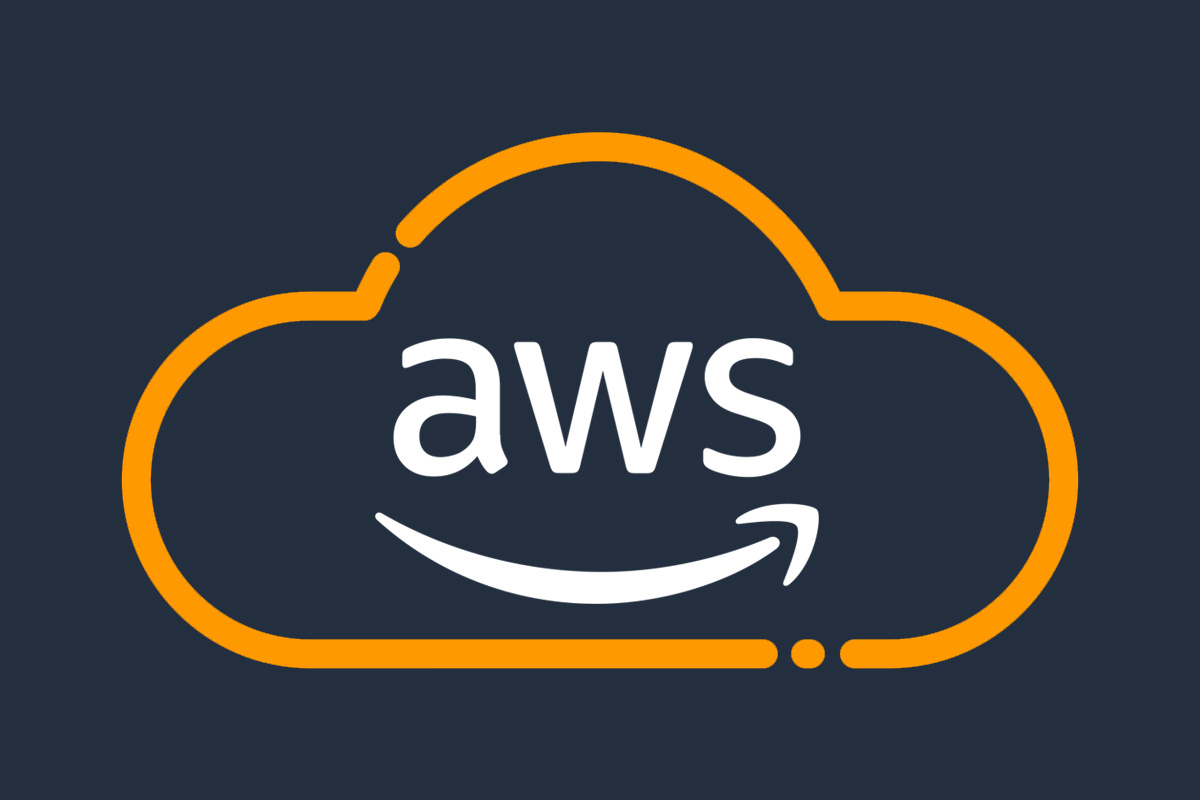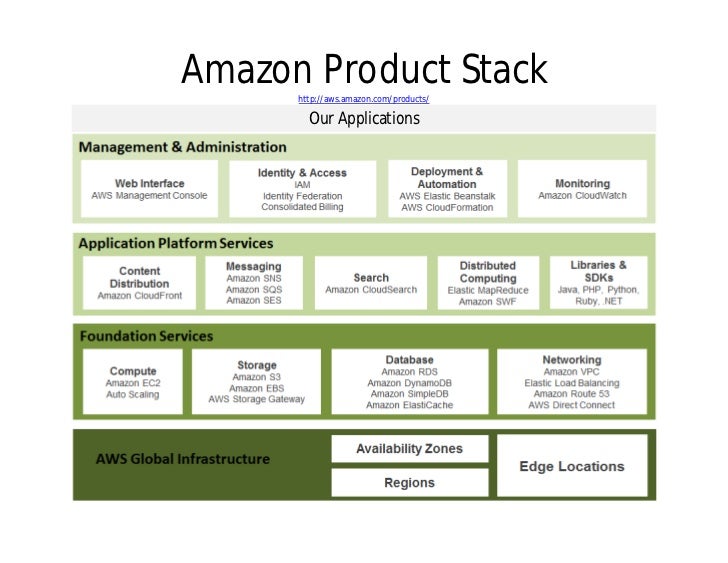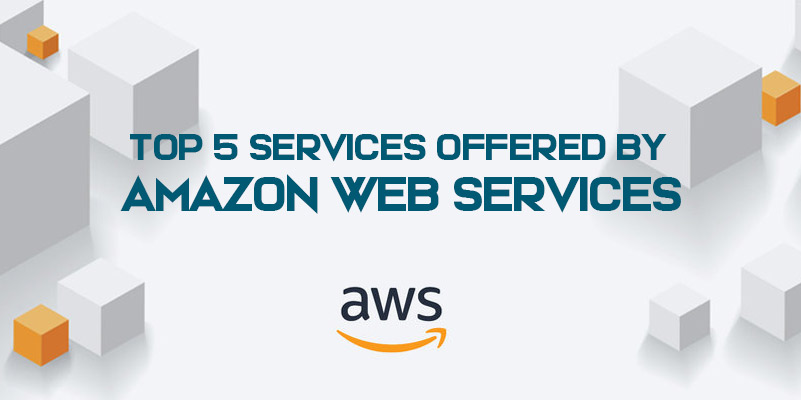What are Amazon Web Services?
Amazon Web Services (AWS) is a comprehensive suite of cloud computing services provided by Amazon. Established in 2006, AWS has grown to become a dominant player in the cloud computing market, offering a vast array of products and services designed to cater to various computing, storage, and database needs. AWS provides on-demand computing power, scalable storage, and database management, along with content delivery and other functionality to help businesses and individuals enhance their operations, improve efficiency, and reduce IT overhead.
Key Benefits of Amazon Web Services
Amazon Web Services (AWS) offers numerous benefits to businesses and individuals, making it a popular choice for cloud computing needs. Some of the key advantages of using AWS include:
- Scalability: AWS allows users to quickly and easily scale their computing resources up or down based on demand, ensuring optimal performance and cost-efficiency.
- Flexibility: AWS supports a wide range of operating systems, databases, and architectural designs, enabling users to build and deploy applications seamlessly across various environments.
- Cost-effectiveness: With AWS, users only pay for the resources they consume, eliminating the need for significant upfront investments in hardware and infrastructure.
- Security: AWS provides robust security features, including data encryption, firewall protection, and identity and access management, ensuring the confidentiality, integrity, and availability of user data.
By leveraging AWS, businesses and individuals can enhance their operations, improve efficiency, and reduce IT overhead. The platform’s extensive range of services and features enables users to focus on their core competencies, rather than managing and maintaining on-premises infrastructure.
How to Get Started with Amazon Web Services
Getting started with Amazon Web Services (AWS) is a straightforward process. Follow these steps to sign up for an account, set up your environment, and access essential features and services:
- Sign up for AWS: Visit the AWS homepage and click on the “Create an AWS Account” button. Follow the on-screen instructions to provide your contact information, choose a support plan, and enter your payment details. Note that AWS offers a Free Tier for 12 months, which allows new users to explore and experiment with a variety of AWS services at no cost.
- Set up your account: Once your account is created, log in to the AWS Management Console using your email address and password. You will be prompted to set up Multi-Factor Authentication (MFA) for added security. Complete the MFA setup process and familiarize yourself with the AWS Management Console, which serves as the central hub for managing your AWS resources and services.
- Navigate the platform: The AWS Management Console provides access to numerous services and features. Some essential areas to explore include:
- Compute Services: Amazon Elastic Compute Cloud (EC2), AWS Lambda, and Elastic Container Service (ECS) enable users to run and manage applications and services in the cloud.
- Storage Services: Amazon Simple Storage Service (S3), Amazon Elastic Block Store (EBS), and Amazon FSx provide scalable and durable storage solutions for various use cases.
- Database Services: Amazon Relational Database Service (RDS), Amazon DynamoDB, and Amazon Redshift facilitate the management and scaling of databases and data warehouses.
- Networking Services: Amazon Virtual Private Cloud (VPC), AWS Direct Connect, and Amazon Route 53 enable users to create and manage virtual networks, connect on-premises infrastructure to AWS, and manage domain name system (DNS) services.
By following these steps, new users can quickly and easily get started with Amazon Web Services, access essential features and services, and begin exploring the platform’s capabilities.
Top Amazon Web Services Products and Use Cases
Amazon Web Services (AWS) offers a wide range of products and services designed to cater to various computing, storage, and database needs. Here are some of the most popular AWS products and their real-world applications:
Amazon Elastic Compute Cloud (EC2)
EC2 is a web service that provides resizable computing capacity in the cloud. It is designed to make web-scale cloud computing easier for developers. Use cases for EC2 include web and mobile applications, data processing tasks, media hosting, and enterprise applications.
Amazon Simple Storage Service (S3)
S3 is an object storage service that offers industry-leading scalability, data availability, security, and performance. It is ideal for backup and restore, archive, disaster recovery, and data lake storage. Businesses and individuals in industries such as media, gaming, and healthcare leverage S3 for their storage needs.
Amazon Relational Database Service (RDS)
RDS is a managed service that makes it easy to set up, operate, and scale a relational database in the cloud. It supports popular database engines like MySQL, PostgreSQL, MariaDB, Oracle, and SQL Server. RDS is used by e-commerce platforms, web and mobile applications, and gaming companies to manage their databases.
Amazon Lambda
AWS Lambda is a serverless compute service that lets you run your code without provisioning or managing servers. It executes your code only when needed and scales automatically. Lambda is used for serverless web applications, data processing, and IoT backends.
Amazon Elastic Kubernetes Service (EKS)
EKS is a managed service that makes it easy to run Kubernetes on AWS without needing to manage your own Kubernetes control plane or nodes. It enables users to run highly available and scalable Kubernetes clusters and is used by businesses in industries such as finance, healthcare, and gaming.
Amazon Virtual Private Cloud (VPC)
VPC enables users to launch AWS resources into a virtual network that they’ve defined. This virtual network closely resembles a traditional network that you’d operate in your own data center, with the benefits of using the scalable infrastructure of AWS. VPC is used by businesses to secure their cloud resources and isolate their networks.
Amazon CloudFront
CloudFront is a fast content delivery network (CDN) service that securely delivers data, videos, applications, and APIs to customers globally with low latency and high transfer speeds within a developer-friendly environment. It is used by businesses in industries such as media, e-commerce, and gaming to deliver content quickly and securely.
These are just a few examples of the many AWS products and services available. By understanding the capabilities and use cases of these offerings, businesses and individuals can make informed decisions about how to leverage Amazon Web Services to enhance their operations, improve efficiency, and reduce IT overhead.
Best Practices for Amazon Web Services Management
Managing Amazon Web Services (AWS) effectively requires a strategic approach and continuous learning. Here are some best practices for optimizing AWS usage, ensuring security, and staying up-to-date with AWS updates and best practices:
Monitor Costs
AWS provides various tools, such as Cost Explorer and Cost and Usage Reports, to help users monitor and optimize their costs. Regularly reviewing these reports and implementing cost-saving strategies, such as Reserved Instances and Spot Instances, can help reduce expenses and improve ROI.
Implement Security Measures
Security is a top priority for AWS. Users should leverage AWS security services, such as Identity and Access Management (IAM), Security Groups, and Virtual Private Cloud (VPC), to secure their resources and data. Regularly reviewing and updating security policies can help prevent unauthorized access and data breaches.
Utilize Automation Tools
AWS provides various automation tools, such as AWS CloudFormation, AWS OpsWorks, and AWS Lambda, to automate infrastructure management and application deployment. Utilizing these tools can help reduce manual errors, improve efficiency, and ensure consistent configurations.
Continuous Learning
AWS updates and releases new features and services regularly. Staying up-to-date with these changes and continuously learning about new AWS best practices can help users optimize their AWS usage and improve their overall experience. Users can leverage AWS training resources, such as AWS Training and Certification, to enhance their skills and knowledge.
Perform Regular Audits
Regularly auditing AWS resources and configurations can help identify potential issues, such as underutilized resources, security vulnerabilities, and cost inefficiencies. Users can leverage AWS Trusted Advisor and AWS Config to perform regular audits and ensure their AWS environment is optimized and secure.
Implement Disaster Recovery and Backup Strategies
Implementing disaster recovery and backup strategies can help users protect their data and applications from unexpected outages and failures. AWS provides various services, such as Amazon Elastic Block Store (EBS) snapshots, Amazon Machine Images (AMIs), and AWS Backup, to help users implement effective disaster recovery and backup strategies.
Leverage DevOps Practices
Leveraging DevOps practices, such as continuous integration and continuous delivery (CI/CD), can help users improve their development and deployment processes. AWS provides various DevOps tools, such as AWS CodePipeline, AWS CodeBuild, and AWS CodeDeploy, to help users implement effective CI/CD pipelines and improve their overall development and deployment processes.
By following these best practices, users can optimize their AWS usage, ensure security, and improve their overall experience with the platform. Continuously learning and staying up-to-date with AWS updates and best practices is essential to maximizing the potential of AWS and achieving long-term success.
Comparing Amazon Web Services to Other Cloud Providers
Amazon Web Services (AWS) is a leading cloud computing provider, but it’s not the only option available. Microsoft Azure and Google Cloud Platform are two other major players in the cloud computing market. Here’s a comparison of AWS to these other cloud providers, highlighting the unique selling points of each platform and helping readers determine which provider is best suited for their needs.
Amazon Web Services (AWS)
AWS is the oldest and most mature cloud computing provider, with a vast array of services and features. AWS offers a wide range of products and services, including computing power, storage, databases, and content delivery. AWS has a strong presence in the enterprise market and is well-suited for businesses of all sizes, from startups to large enterprises.
Microsoft Azure
Microsoft Azure is a strong competitor to AWS, offering a wide range of services and features. Azure is well-integrated with Microsoft’s existing product suite, making it an attractive option for businesses that already use Microsoft products, such as Office 365 and Dynamics. Azure is also a good option for businesses that use Windows-based systems, as it offers strong support for Windows and .NET.
Google Cloud Platform (GCP)
Google Cloud Platform is a newer entrant to the cloud computing market, but it has quickly gained popularity due to its strong focus on innovation and cutting-edge technology. GCP offers a wide range of services and features, including computing power, storage, databases, and machine learning. GCP is well-suited for businesses that are looking for a cloud provider that can help them innovate and stay ahead of the curve.
Comparing the Three Providers
When comparing AWS, Azure, and GCP, there are several factors to consider, including cost, performance, security, and ease of use. Here’s a brief comparison of these factors for each provider:
- Cost: AWS and Azure are generally considered to be more expensive than GCP, but this can vary depending on the specific services and features being used.
- Performance: AWS and GCP are generally considered to have better performance than Azure, but this can also vary depending on the specific services and features being used.
- Security: All three providers offer robust security features, but AWS and Azure are generally considered to have a stronger focus on security than GCP.
- Ease of Use: AWS and Azure are generally considered to be more user-friendly than GCP, but this can vary depending on the specific services and features being used.
Ultimately, the best cloud provider for a business will depend on its specific needs and requirements. Businesses should carefully evaluate each provider’s offerings and determine which provider can best meet their needs in terms of cost, performance, security, and ease of use.
Amazon Web Services Success Stories
Amazon Web Services (AWS) has helped numerous businesses and individuals achieve their goals and overcome challenges. Here are some inspiring success stories that highlight the power and potential of AWS.
Netflix
Netflix, the world’s leading streaming service, uses AWS for its entire infrastructure. By leveraging AWS’s scalability and flexibility, Netflix has been able to handle massive traffic spikes and expand its global footprint. AWS has helped Netflix reduce its IT costs, improve its disaster recovery capabilities, and accelerate its innovation efforts.
Airbnb
Airbnb, the popular home-sharing platform, uses AWS for its data processing and analytics needs. By leveraging AWS’s computing power and storage capabilities, Airbnb has been able to handle massive amounts of data and provide personalized recommendations to its users. AWS has helped Airbnb improve its operational efficiency, reduce its IT costs, and accelerate its growth.
Pinterest, the social media platform, uses AWS for its computing, storage, and database needs. By leveraging AWS’s scalability and flexibility, Pinterest has been able to handle massive traffic spikes and expand its user base. AWS has helped Pinterest reduce its IT costs, improve its performance, and accelerate its innovation efforts.
Slack
Slack, the popular team collaboration platform, uses AWS for its computing, storage, and database needs. By leveraging AWS’s scalability and flexibility, Slack has been able to handle massive traffic spikes and expand its user base. AWS has helped Slack reduce its IT costs, improve its performance, and accelerate its growth.
Individual Success Stories
AWS has also helped numerous individuals achieve their goals and pursue their passions. For example, AWS has helped independent game developers create and launch their own games, and it has helped data scientists and analysts process and analyze massive datasets. AWS has also helped startups and small businesses launch and grow their operations, and it has helped students and hobbyists learn new skills and pursue their interests.
These success stories highlight the power and potential of Amazon Web Services. By leveraging AWS’s capabilities and features, businesses and individuals can achieve their goals, overcome challenges, and unlock new opportunities. Whether you’re a startup or a large enterprise, a data scientist or a game developer, AWS has the tools and resources you need to succeed in the cloud computing market.
The Future of Amazon Web Services
Amazon Web Services (AWS) has been a dominant player in the cloud computing market for over a decade, and it continues to evolve and expand its offerings. In this section, we’ll speculate on the future developments and trends of AWS, including potential new services, improvements in existing offerings, and the evolution of the cloud computing market.
Expanding Global Footprint
AWS has been expanding its global footprint by building new data centers and regions around the world. This expansion will continue in the future, allowing AWS to provide low-latency and high-availability services to customers in different parts of the world. AWS may also explore new ways to deliver its services, such as satellite-based internet or edge computing.
Artificial Intelligence and Machine Learning
Artificial intelligence (AI) and machine learning (ML) are becoming increasingly important in the cloud computing market, and AWS has been investing heavily in these areas. AWS offers a wide range of AI and ML services, such as Amazon SageMaker, Amazon Lex, and Amazon Polly. In the future, we can expect AWS to continue to innovate and improve its AI and ML offerings, making it easier for businesses and individuals to build and deploy intelligent applications.
Internet of Things (IoT)
The Internet of Things (IoT) is a growing market, and AWS has been offering services to help businesses and individuals build and manage IoT devices and applications. AWS offers services such as AWS IoT Core, AWS IoT Greengrass, and AWS IoT Analytics. In the future, we can expect AWS to continue to expand its IoT offerings, providing new and innovative ways to connect and manage IoT devices.
Data Analytics and Business Intelligence
Data analytics and business intelligence are critical for businesses to make informed decisions and gain a competitive advantage. AWS offers a wide range of data analytics and business intelligence services, such as Amazon Redshift, Amazon Kinesis, and Amazon QuickSight. In the future, we can expect AWS to continue to improve and innovate its data analytics and business intelligence offerings, providing new and powerful ways to analyze and visualize data.
Security and Compliance
Security and compliance are essential for businesses and individuals to trust and use cloud computing services. AWS has been investing heavily in security and compliance, offering services such as AWS Identity and Access Management (IAM), AWS Key Management Service (KMS), and AWS Security Hub. In the future, we can expect AWS to continue to improve and innovate its security and compliance offerings, providing new and powerful ways to secure and protect data and applications.
Continuous Learning and Adaptation
The cloud computing market is constantly evolving, and AWS must continue to learn and adapt to stay ahead of the competition. AWS must continue to invest in research and development, hire and train top talent, and collaborate with partners and customers to innovate and improve its offerings. By staying informed and adaptable, businesses and individuals can maximize their AWS experience and stay ahead of the curve in the cloud computing market.
In conclusion, the future of Amazon Web Services looks bright, with new and innovative services and improvements in existing offerings. By expanding its global footprint, investing in AI and ML, IoT, data analytics and business intelligence, and security and compliance, AWS is well-positioned to continue to lead the cloud computing market. To maximize their AWS experience, businesses and individuals must stay informed and adaptable, taking advantage of new and innovative services as they become available.




